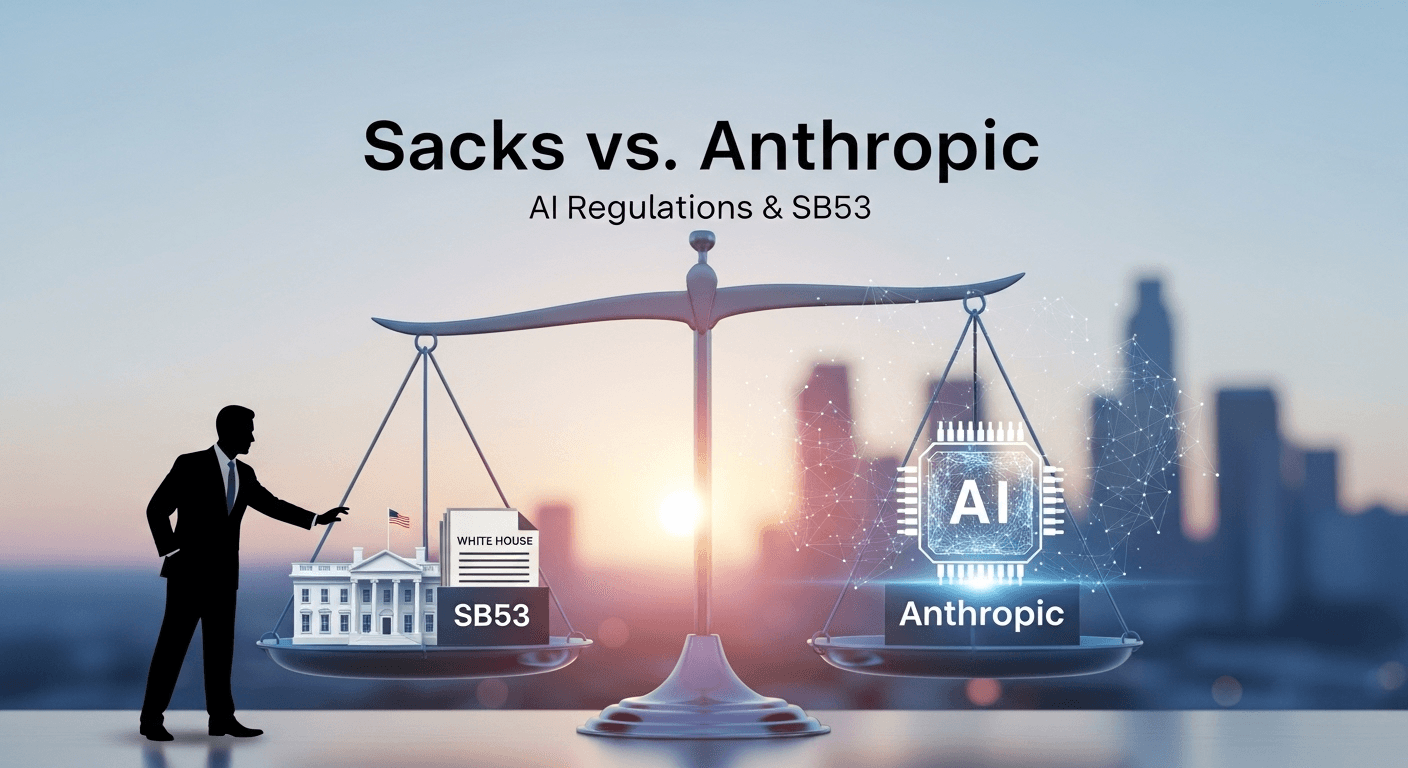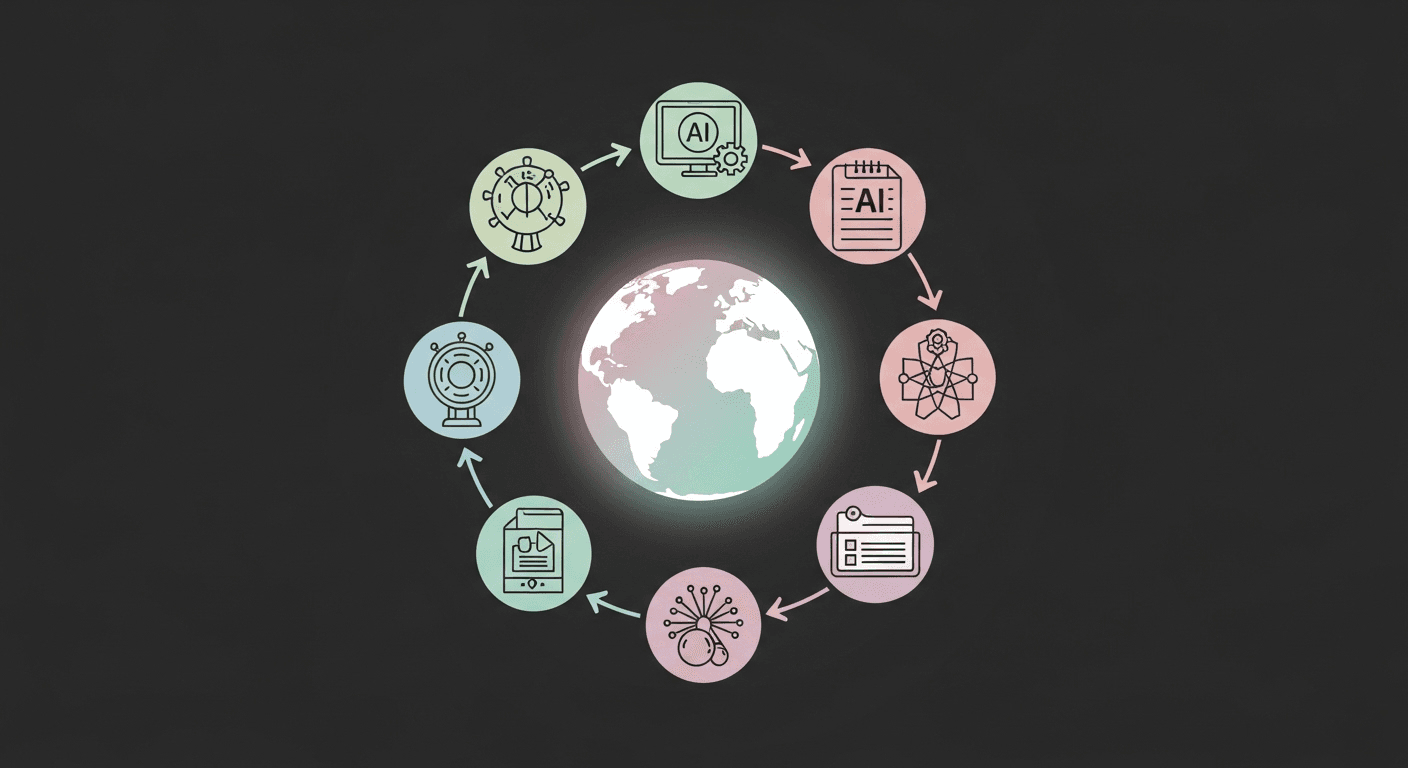Work in 2025: AI Agents, New Jobs, and the Skills That Matter

Work in 2025: AI Agents, New Jobs, and the Skills That Matter
Are you curious about how the workplace is evolving in 2025? This guide synthesizes insights from credible research on AI, job shifts, hybrid work, and the essential skills to remain influential in your field. It builds upon key ideas from the Medium post, “The Future of Work in 2025,” which emphasized that advanced AI will not only replace some tasks but also create fresh opportunities if we adequately prepare.
We validate the most significant claims using recent findings from sources such as the World Economic Forum, Microsoft, the IMF, Stanford, BLS, NIST, and more. Expect an approachable, human-centered perspective: what’s genuinely changing, what’s merely hype, and actionable next steps.
TL;DR
- AI is evolving from copilots to robust AI agents. Organizations effectively leveraging both human talent and AI are gaining a competitive edge.
- Job creation through 2030 appears favorable overall, with an expectation of creating 170 million roles while displacing 92 million globally, driven by AI advancements, the green transition, demographic trends, and geopolitical shifts. Skills will need to adapt rapidly.
- Hybrid work remains stable, accounting for about 25% to 30% of U.S. workdays, despite increasing calls for a return to office settings.
- Generative AI can significantly enhance productivity, particularly for new entrants to the workforce, but results will vary based on the task and environment.
- Responsible AI is becoming an essential management discipline, with emerging regulatory frameworks like the EU AI Act and various guidelines from NIST and the U.S. Department of Labor.
1) Why 2025 Feels Different: Agents at Work, Not Just Chatbots
In 2024, many organizations experimented with chat-style tools. By 2025, companies are deploying task-oriented AI agents capable of planning, interacting across tools, and delegating responsibilities back to humans. Microsoft refers to this as the era of the “Frontier Firm” and the “agent boss,” where employees increasingly manage a portfolio of AI agents. Early adopters are embracing “digital labor” to bridge the gap between growing demands and limited human resources.
Practical Implications:
- Job roles will shift from performing specific tasks to designing workflows, managing AI delegation, and reviewing outputs.
- Teams will adopt a “human-agent ratio” approach, determining which tasks can be automated, augmented, or should remain human-centered for quality and customer satisfaction.
Reality Check: Some analysts caution against getting caught up in the hype. Many agent projects may stall due to issues with data quality, security, or unclear ROI. A shakeout is expected before mainstream adoption.
2) Jobs Outlook: More Creation Than Destruction, but Major Churn
The World Economic Forum’s 2025 Future of Jobs report forecasts that by 2030, job churn will equal approximately 22% of today’s workforce: roughly 170 million new roles will be created while 92 million will be displaced, leading to a net gain of 78 million jobs. Growth will be concentrated in sectors such as technology, data analysis, cybersecurity, care, education, and the green economy.
Employers anticipate significant shifts in skill requirements and plan for widespread upskilling.
The IMF estimates that around 60% of jobs in advanced economies are at risk of AI exposure, with about half of these cases likely to enhance productivity while the other half could lead to displacement. Meanwhile, exposure is comparatively lower in emerging markets, highlighting disparities in risk and readiness.
Takeaway:
While the overall volume of work remains substantial, the nature of tasks and premium skills will evolve rapidly. Workers, educational institutions, and employers who prioritize AI literacy and human strengths will be positioned to seize opportunities.
3) Productivity: Evidence-Based Insights
Recent peer-reviewed studies clearly show where generative AI can deliver the most benefits:
- Customer support agents utilizing a generative AI assistant resolved 14% more issues per hour, particularly benefiting less experienced employees.
- In controlled writing environments, professionals completed tasks 40% faster with high-quality output when assisted by tools like ChatGPT.
Across the broader economy, U.S. labor productivity rebounded significantly in 2024, with robust quarterly gains expected in 2025. Though it’s premature to fully credit these macro shifts to AI alone, investments in AI-rich software and data centers are on the rise.
What This Means for You:
- Generative AI tends to accelerate the learning curve, allowing early-career professionals to advance more quickly if utilized effectively.
- Gains rely on quality data, precise prompts, clearly defined acceptance criteria, and structured review processes. Without these, performance may stagnate.
4) Hybrid Work: More Stable Than Headlines Suggest
Despite increasing headlines about directives to return to the office, multiple high-quality studies indicate that remote and hybrid work has stabilized since 2023. Estimates show that around 25% to 30% of U.S. workdays are performed from home, with around 40% of college-educated professionals engaging in at least some remote work. In general, English-speaking countries exhibit a higher embrace of hybrid work, while East Asian countries maintain more traditional office-centric models.
Why This Matters:
- Hybrid work necessitates new skill sets, including asynchronous communication, documentation, and supervision of AI agents.
- Days in the office are increasingly focused on collaboration, training, and building social capital rather than solo tasks.
5) From Copilots to Career Accelerators: Embracing the “Agent Boss” Mindset
As the next phase of adoption unfolds, employees will be encouraged to think like builders and managers: deciding which agent handles which tasks, what guidelines are in place, and defining what constitutes successful completion. Leaders are already seeing agents automate customer service workflows and marketing operations in initial tests, with product development following suit. Success will require new metrics, including assessing the human-agent ratio based on task importance.
Caveat:
Expect many agent initiatives to be scrapped in the coming years due to cost, security, or value considerations. It is best to pilot with clear hypotheses, manageable scopes, and thorough evaluations.
6) Skills That Will Matter Most Through 2030
Data from the WEF, Coursera, and enterprise surveys highlights a two-part skills stack: AI-oriented skills paired with human strengths.
- AI-related Skills: There is a rising demand for skills such as AI literacy, prompt design, data analysis, cybersecurity, and oversight of AI models. Enrollment in AI courses has surged across regions, and employers are planning broad reskilling initiatives.
- Human Strengths: Critical thinking, resilience, collaboration, leadership, communication, and ethics are increasingly valued alongside technical know-how.
Economist David Autor suggests that if we design AI to support rather than supplant human judgment, we could regenerate positions in middle-skill, middle-income jobs in areas like healthcare, education, and legal services. However, achieving this outcome will hinge on the decisions made by leaders and policymakers.
7) Responsible AI at Work: Establishing New Standards
Regulatory bodies and standards organizations are moving swiftly to set frameworks. As we approach 2025, the following four frameworks are essential for employers and professionals:
- EU AI Act: Obligations will roll out through 2025-2026, banning specific practices and restricting high-risk use cases.
- ISO/IEC 42001: The first standard for AI management systems, providing a certifiable governance framework for organizations involved with AI.
- NIST AI Risk Management Framework (AI RMF 1.0) and Playbook: Offers practical guidance for governing, mapping, measuring, and managing AI-related risks.
- U.S. Department of Labor AI and Worker Well-Being Principles: Emphasizes transparency, human oversight, and protections for workers’ rights.
Action Steps for Teams:
- Inventory potential AI use cases, classify risks, designate owners, and document data sources and review processes.
- Draft a user-friendly AI policy detailing usage, disclosure requirements, and review processes.
- Monitor outcomes and errors, treating AI as a safety-critical tool where the stakes are high.
8) A Practical 90-Day Playbook for Individuals
Follow these actionable steps to harness uncertainty and create momentum:
- Build AI Literacy in Your Field:
- Complete one brief, hands-on course tailored to your role (e.g., analysis, writing, coding, design). Record before-and-after metrics on time saved for recurring tasks.
-
Develop a simple prompt library for your most common tasks.
-
Design One Human-Plus-Agent Workflow:
- Choose a repetitive, rules-based process. Clearly define what “done” means, criteria for success, exceptions, and review procedures.
-
Measure both quality and efficiency. If quality dips, either reduce automation or introduce additional checkpoints.
-
Embrace the Role of Agent Boss:
- Create a Standard Operating Procedure (SOP) that outlines prompts, data sources, roles, and an audit trail, and share it with your team.
-
Regularly track successes and failures, adjusting as necessary.
-
Enhance Human Strengths:
- Focus on concise writing, providing constructive feedback, and regular updates to stakeholders. These skills will be increasingly valuable in hybrid, AI-enhanced workplaces.
9) A 90-Day Playbook for Leaders
- Define the Purpose of AI:
-
Identify 3-5 key business outcomes where AI could shorten cycle times, enhance quality, or provide personalized solutions at scale.
-
Establish Responsible Governance:
-
Implement a streamlined policy that aligns with NIST AI RMF and legal requirements. Create an AI review working group comprising legal, security, data, and operations staff.
-
Pilot AI Agents in Established Workflows:
-
Start with areas like customer service, marketing operations, or internal knowledge searches, measuring the human-agent ratio and devising a strategy for managing errors or misuse.
-
Invest in Your People:
- Fund micro-upskilling opportunities in generative AI for all knowledge workers, alongside more intensive training for AI leads. Data from WEF indicates that most employers intend to reskill and redeploy; follow suit.
10) Sector Snapshots
- Tech and Professional Services: Fastest adoption of AI agents, with talent gravitating towards AI-native startups and roles that integrate aspects of product, data, and security.
- Cybersecurity: Growing demand for individuals skilled in AI risk management, governance, and security amidst rising generative AI-enabled threats.
- Green Economy: Expansion within renewable energy, electric vehicles, and climate-related roles as climate action becomes a pivotal trend.
- Care and Education: Significant potential for augmentation, enhanced accessibility, and new middle-skill pathways contingent upon worker-centered policies and designs.
11) What About AGI?
The original article approached 2025 within the framework of highly capable AI that can perform various tasks. Whether labeled as AGI or advanced AI, the pressing question remains: how can we balance work between humans and machines to optimize value and uphold dignity? Research indicates that robust human-plus-AI collaborations can create stable environments where each party leverages their comparative advantages, with policy adjustments steering toward favorable worker outcomes.
12) What to Watch Next
- Improved measurement of AI’s impact on entry-level jobs and early-career pipelines, as several studies indicate mixed or negative effects on new graduates in AI-exposed roles.
- The shakeout of AI agents: identifying which use cases yield a reliable return on investment and which may be discontinued.
- Adherence to standards and enforcement of regulations: monitoring timelines for the EU AI Act, ISO 42001 certifications, and the integration of frameworks such as NIST AI RMF into everyday governance.
Conclusion: Choose Augmentation, Build Resilient Careers
Work in 2025 represents not just a single narrative but a series of decisions. Data suggests promising potential for job growth and productivity, alongside significant disruption, particularly affecting entry-level positions. The pathway forward is both practical and human-centric: embrace AI, focus on developing human strengths, establish clear workflows involving both humans and AI, and implement responsible governance measures. Those who take these steps will be well-prepared for the next wave of intelligence, regardless of its label.
FAQs
Will AI Take My Job?
Most likely not entirely, but it will change certain tasks within your role. While global employment is projected to grow, about 22% of current positions are expected to experience churn by 2030. Concentrate on the tasks that allow for a blend of judgment, communication, and AI capabilities.
What Skills Should I Prioritize?
Develop AI literacy and prompt techniques relevant to your core tasks, along with fundamental data hygiene practices and at least one domain-specific tool. Pair these technical skills with communication, critical thinking, and collaboration abilities, as employers indicate a growing need for both skill sets by 2030.
Are AI Agents Safe and Ready for Use?
They show promise but have inconsistent performance. Start with small-scale implementations, measure their effectiveness, and maintain human oversight over critical processes. Many AI projects may be discontinued before they fully mature.
Is Hybrid Work a Temporary Trend?
Unlikely. Multiple data sources indicate that hybrid work has stabilized, accounting for approximately a quarter of U.S. workdays, especially among college-educated professionals. Policies will continue to evolve, but the structural shift appears sustainable.
How Should Leaders Govern AI in the Workplace?
Implement a clear and concise policy in line with NIST AI RMF, account for compliance with the EU AI Act if operating in Europe, and consider pursuing ISO 42001 certification to operationalize governance practices within your organization.
Sources and Further Reading
- World Economic Forum, Future of Jobs Report 2025 (insights on job creation, displacement, and necessary skills).
- Microsoft, Work Trend Index 2025: “The Year the Frontier Firm is Born” (exploration of human-agent collaboration).
- IMF, Staff Discussion Note 2024: “Gen-AI: Artificial Intelligence and the Future of Work” (AI exposure in different economies).
- Brynjolfsson, Li, Raymond (2023-2025), Generative AI at Work (productivity insights).
- Noy & Zhang (2023), Science (study on writing productivity with AI).
- Stanford SIEPR & WFH Research: Hybrid Work Levels and Stability.
- EU AI Act developments and employer restrictions.
- ISO/IEC 42001: AI Management System Standard.
- NIST AI RMF and Playbook: Governance and Risk Management Resources.
- U.S. Department of Labor: AI and Worker Well-Being Principles.
Thank You for Reading this Blog and See You Soon! 🙏 👋
Let's connect 🚀
Latest Blogs
Read My Latest Blogs about AI

Sacks vs. Anthropic: The High-Stakes Battle Over AI Regulations, Regulatory Capture, and California’s SB53
White House adviser David Sacks accuses Anthropic of manipulating AI rules. We explore SB53, the regulatory capture debate, and its implications for startups and federal policy.
Read more


